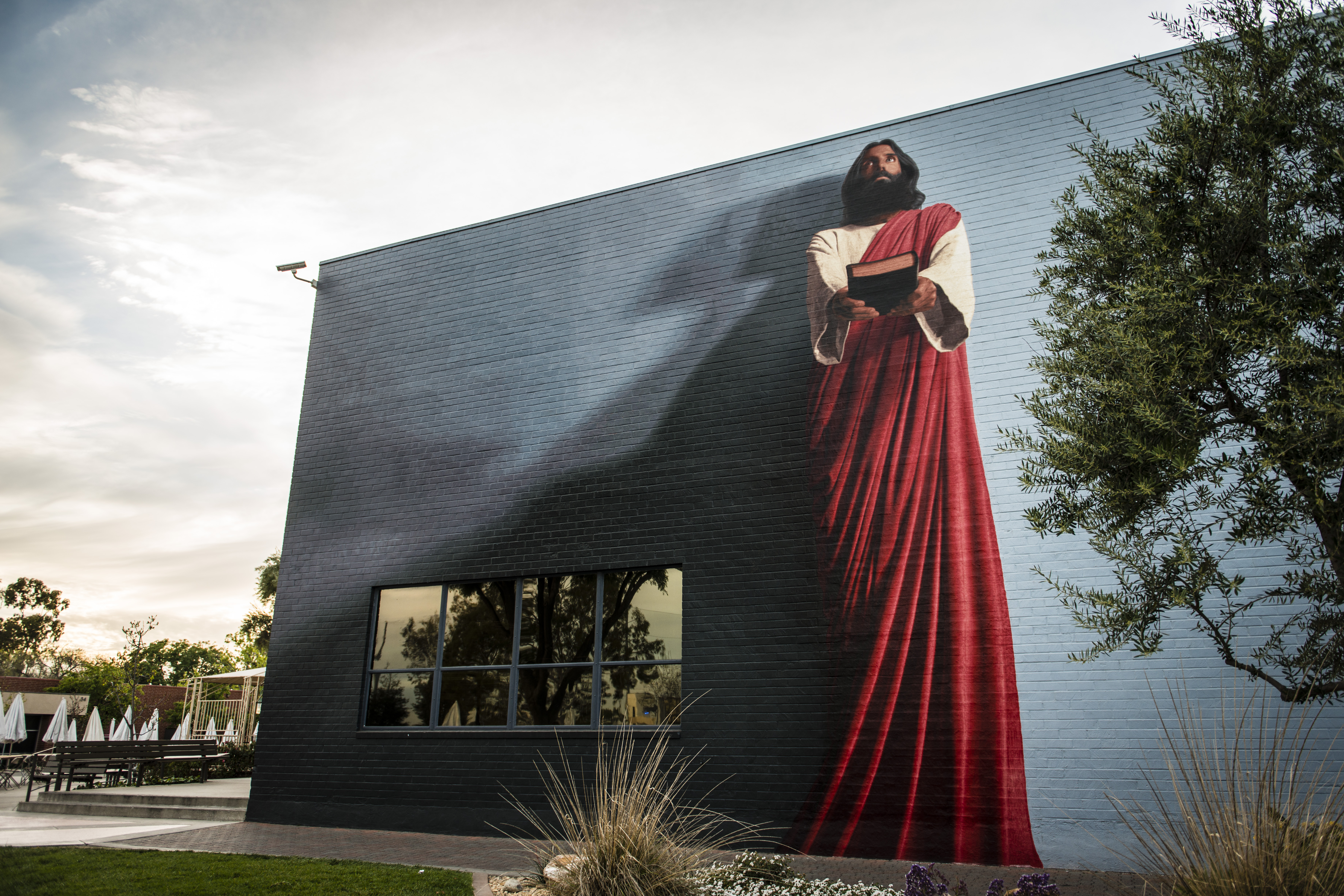The conversation surrounding racial diversity and the Jesus Mural was furthered by a 12-page letter from president Barry Corey released to students today.
In a letter detailing nine reasons behind the September 2010 decision to keep the Jesus Mural, Corey urged the Biola community to engage in “new and several” conversations regarding diversity.
Corey spent a paragraph repenting of harmful attitudes he and other members of the Biola community have had toward minority groups on campus. Additionally, he acknowledged that he has been able to engage others’ pain more over the past few years.
Controversey and restoration
Glen Kinoshita, director of Multi-Ethnic Programs & Development, noted that the discussion around the Jesus Mural has historically been tense.
“The Jesus Mural has always been controversial and there has always been a contingent of the community that has struggled with the image for various reasons. It’s those folks that have felt it’s been difficult to be heard and to be understood,” he said.
The appearance of the Jesus Mural, painted by well-known muralist Kent Twitchell, has been problematic, especially among community members who feel that it underrepresents minorities.
The final decision in favor of the 2011 restoration of the Jesus Mural was announced after months of discussions and panels. Restoration of the Mural was initially proposed in spring 2008, after which Corey deferred the decision in order to have more time for discussion.
Addressing the pain in community two and half years later
The letter’s release — two and a half years after the decision about the restoration — was spurred on by many factors, which Corey illustrated through a variety of vignettes. It’s not one particular thing that has pushed him to publish it now, he said in an interview.
“After the decision was made, it became quiet around campus and people just moved on. And it’s taken me many months, after conversations and hearing from people [to understand] how many people really moved on in pain,” Corey said.
In his letter, Corey characterized the initial announcement as “long on next steps but short on why.” He wrote that his failure to explain the rationale behind the Mural decision was a “misstep,” but hopes the letter will begin to address the suffering felt in the Biola community.
“The fact that it took two and a half years is probably a statement that in some ways, I’m a slow learner,” he said.
Alumnus influences Corey's response
One of the moments Corey mentioned in his letter was alumnus Alain Datcher’s response immediately following the initial announcement to restore the Mural in 2010.
Datcher, who was AS multicultural relations director at the time, shared his heart in a way that has stuck with Corey for two and a half years.
“This member of the body feels wounded,” Datcher said during the 2010 announcement. “Will you choose to hurt with me?
“Everyone has a choice in this matter … I ask Biola in its entirety. Will you choose to come? Will you choose to care? And will you choose reconciliation?”
Corey acknowledges more could have been done to come alongside suffering students.
“I really, truly grieve and repent for just kind of moving on and saying ‘OK, let’s do a few things differently,’ but the conversation has to continue,” he said.
Continuing to discuss organically
Datcher, who graduated in 2011 and is now working toward a master’s in public policy at Pepperdine University, said the letter was difficult for him to read because it brought up frustrations from the past, though he appreciated the president’s vulnerability.
Conversation alone is not enough, Datcher said. It must propel students to serve a diverse community.
“The purpose of building up the community has never been just so that Biola students have a diverse experience when they leave in four years … More [important], and I think this is what Dr. Corey really is trying to reflect, is that we’re trying to be built up as believers in order to go out and impact the community,” he explained.
It is critical that Biola carry on discussing diversity in meaningful and organic ways, Corey said.
“What happened two and a half years ago, and even two years before then, is we organized a series of conversations and papers were commissioned, and chapels and panels and everything else, and that doesn’t need to be the next step,” Corey said.
Instead, the culture of Biola must change to acknowledge others’ different perspectives, he said.
“It’s got to get more into our culture rather than fiat from on high,” Corey said.
A desire for the Biola community to receive letter
Matthew Hooper, associate dean of students, was impressed by Corey’s humility throughout the letter.
“In reading through that letter, I am so grateful that there was a clear articulation of confession from our president. That, to me, goes deeper than the intellectual understanding of the issues or the rationale behind the decision. That, to me, touches on the very heart of God, the ultimate reconciler,” Hooper said.
Corey expressed his repentance and desire that the Biola community receive his letter.
“I want this university to receive it in the spirit which it is written — that is, the spirit of this is the reason why I made the decision but I’m also deeply pained about how some receive this and I ask for forgiveness for that,” Corey explained.








